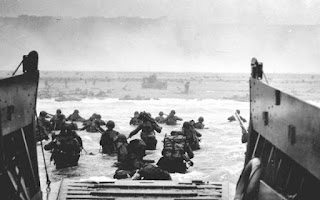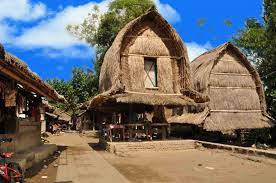- Duration: World War II lasted from September 1, 1939, to September 2, 1945.
- Origins: The war began with the German invasion of Poland, leading to the United Kingdom and France declaring war on Germany.
- Axis Powers: The major Axis Powers were Germany, Italy, and Japan.
- Allied Powers: The major Allied Powers included the United States, the Soviet Union, the United Kingdom, and China.
- Blitzkrieg: Germany employed a military strategy known as "blitzkrieg" or lightning war, characterized by fast-moving, coordinated attacks.
- The Holocaust: The systematic genocide of six million Jews and millions of others by the Nazis during the war is known as the Holocaust.
- Pearl Harbor: The Japanese attacked the U.S. naval base at Pearl Harbor on December 7, 1941, leading to the United States' entry into the war.
- D-Day: On June 6, 1944, the Allies launched a massive invasion of Normandy, France, known as D-Day, a pivotal moment in the war.
- Atomic Bombs: The United States dropped atomic bombs on the Japanese cities of Hiroshima and Nagasaki in August 1945, leading to Japan's surrender.
- Yalta Conference: In February 1945, the leaders of the Allied Powers—Roosevelt, Churchill, and Stalin—met in Yalta to discuss post-war plans.
- The Manhattan Project: The U.S. developed the atomic bomb through the Manhattan Project, a massive research and development undertaking.
- Battle of Stalingrad: The Battle of Stalingrad (1942-1943) was one of the largest and bloodiest battles of the war, with the Soviets emerging victorious.
- Holocaust Trials: The Nuremberg Trials (1945-1946) prosecuted prominent leaders of Nazi Germany for war crimes.
- Battles in the Pacific: Key battles in the Pacific theater included Midway, Guadalcanal, and Iwo Jima.
- Battle of Britain: The Battle of Britain (1940) marked a crucial turning point as the Royal Air Force successfully defended the UK against German air raids.
- The Battle of the Bulge: In December 1944, Germany launched a surprise offensive in the Ardennes region, but the Allies ultimately prevailed.
- Women in the Workforce: Women played a significant role on the home front, entering the workforce in large numbers during the war.
- Rosie the Riveter: The iconic image of "Rosie the Riveter" symbolized the contribution of women to the war effort.
- Code Talkers: Native American Code Talkers used their indigenous languages to create unbreakable codes for military communications.
- War Bonds: Governments issued war bonds to finance the war effort, and citizens were encouraged to buy them to support the troops.
- The Battle of El Alamein: A crucial Allied victory in North Africa in 1942, led by British General Bernard Montgomery.
- Evacuation of Dunkirk: In 1940, Allied forces were evacuated from the beaches of Dunkirk, France, in a massive and miraculous operation.
- Japanese Internment: The U.S. government interned over 120,000 Japanese Americans in camps during the war, based on Executive Order 9066.
- Lend-Lease Act: The U.S. provided significant military aid to Allied nations through the Lend-Lease Act before officially entering the war.
- The Pacific Island-Hopping Campaign: Allied forces gradually advanced towards Japan by capturing strategic Pacific islands.
- The Warsaw Uprising: In 1944, the Polish Home Army attempted to liberate Warsaw from German occupation, but the uprising was crushed.
- The Battle of Kursk: Fought on the Eastern Front in 1943, it was the largest tank battle in history, resulting in a Soviet victory.
- The Bataan Death March: Following the Battle of Bataan, Japanese forces subjected American and Filipino prisoners to a grueling forced march.
- The V-2 Rocket: Germany developed the world's first long-range guided ballistic missile, the V-2 rocket.
- The United Nations: The United Nations was established in 1945, aiming to promote international cooperation and prevent future conflicts.
These facts provide a glimpse into the complexity and significance of World War II, a global conflict that shaped the course of history.







